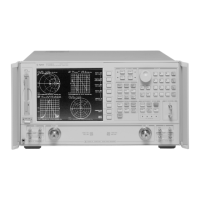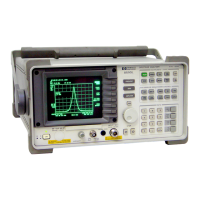10-4
Determining System Measurement Uncertainties
Sources of Measurement Errors
Sources of Random Errors
The random error sources are noise, connector repeatability and interconnecting cable
stability. There are two types of noise in any measurement system: low level noise (noise
floor) and high level noise (trace noise).
Low level noise is the broadband noise floor of the receiver which can be reduced through
averaging or by changing the IF bandwidth.
High level noise or trace noise is due to the noise floor, the phase noise of the LO source
inside the test set, or by reducing the IF bandwidth.
Connector repeatability is the random variation encountered when connecting a pair of RF
connectors. Variations in both reflection and transmission can be observed.
Cable stability is dependent on the cable used and the amount of cable movement between
calibration and measurement.
The listing below shows the abbreviations used for random errors in the error models and
uncertainty equations.
• N
F
= noise floor
• N
T
= trace noise
• C
R1
= port 1 cable reflection stability
• C
TM1
= port 1 cable magnitude transmission stability
• C
TP1
= port 1 cable phase transmission stability
• C
R2
= port 2 cable reflection stability
• C
TM2
= port 2 cable magnitude transmission stability
• C
TP2
= port 2 cable phase transmission stability
• R
R1
= port 1 connector reflection repeatability
• R
T1
= port 1 connector transmission repeatability
• R
R2
= port 2 connector reflection repeatability
• R
T2
= port 2 connector transmission repeatability

